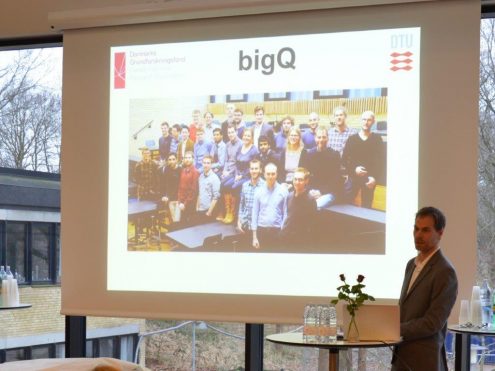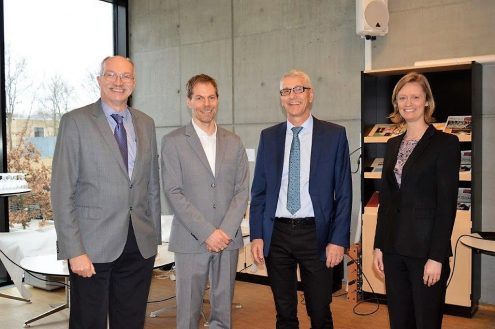Inauguration of Center for Macroscopic Quantum States (BigQ)
The Danish National Research Foundation will invest 63 million DKK in Professor Ulrik Lund Andersen’s exploration of the boundaries between classical physics and the marvelous world of quantum physics during the next six years. On Friday, January 12, the director of the DNRF, Søren-Peter Olesen, had the honor of opening the center by performing an experiment where an object’s transition to a quantum state was simulated.

It is well known that quantum mechanics lead to absurd predictions, for example, that microscopic objects – electrons and atoms – can exist multiple places at once. This, however, contrasts with everyday experiences, in which it is unlikely that we find larger objects – like an apple – multiple places in a room at the same time.
The Center for Macroscopic Quantum States (BigQ) will examine where the border is drawn between the the classical world and the mysterious world of quantum physics. Further, the center will investigate if it is possible to put a large object into a quantum state.
Today, these questions remain unanswered, although they have existed since the Austrian physicist Erwin Schrödinger suggested bringing a cat into a bizarre state of being, both dead and alive at the same time.
The funding from the DNRF makes it possible to combine three technological platforms in one laboratory: quantum optics, opto-mechanics, and color centers in a diamond. This combination cannot be found anywhere else in the world, and Lund Andersen has great expectations for the new knowledge that may result from the research:
“With exactly this combination we will be able to create brand new macroscopic quantum states of light and solids, which makes the investigation of the boundary between classical physics and quantum physics possible. It leads to revolutionary new technologies within communication, computers and sensing. The absurdities of quantum mechanics and its non-intuitive nature, which at first glance can seem like distant academical fun and trickery, can very well accommodate the possibility of new, scientific breakthroughs and a revolution within the information society.”

At the opening of the center, Lund Andersen noted that his ambition is to make BigQ a lighthouse for quantum physics and quantum information – a center that can attract talents from all over the world. It demands a certain amount of dedication and leadership to become a leading global center. At the opening, Lund Andersen was praised for his remarkable qualities as a researcher and research leader by director Søren-Peter Olesen, rector Ander Overgaard Bjarklev, and institute director, Jane Hvolbæk Nielsen.
